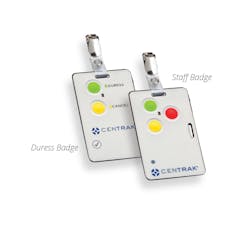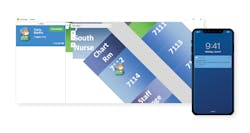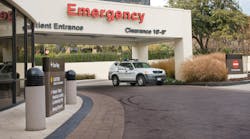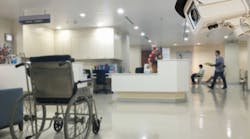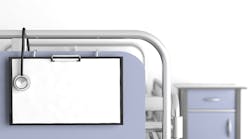The future of healthcare security is a click away
According to reports from the World Health Organization, as high as 38% of healthcare workers face physical violence at some point during their careers. The Occupational Safety and Health Administration cites that the sources of that violence can range from patients and visitors to facility intruders, and even include co-workers. Unfortunately, the COVID-19 pandemic has only exacerbated this issue. In a recent National Nurses United survey, 20% of U.S. registered nurses reported increased workplace violence due to decreased staffing, higher social tensions, and ever-changing visitation restrictions.
Following more than a year of unprecedented sacrifice from healthcare professionals, there has never been a more critical time for hospital security directors to consider how they can further support their heroic team, create a safer environment, and ensure clinical staff can focus on the important work they do to keep communities healthy. As hospitals and other healthcare facilities continue recuperating from the impact of COVID-19, real-time location systems (RTLS) provide cost-effective staff duress solutions that prevent violent threats from escalating to dangerous events, all with the simple click of a button.Introducing Real-Time Duress Technology
Thanks to the technology behind RTLS, staff members can quietly send panic alerts directly to the security team from an easy access button on their location-enabled badge. Even if a security guard is in close proximity, physically signaling for help may provoke a violent encounter to escalate. By clicking the alert button, healthcare workers can share their specific location and the recipient will immediately dispatch the closest security guard for assistance. An active-RFID RTLS security solution helps decrease violence by expanding visibility across the facility’s campus. Using the real-time data, security personnel can promptly arrive at the right place at the right time, providing healthcare professionals an invaluable peace of mind in their work environment.
RTLS Expand Functionality of Hospital Security Systems
Using a wireless network, the RTLS-based security system notes the location and employee making the emergency call. Based on each facility’s specific requirements, responding security staff and hospital teams receive alerts through their computer workstations, email, SMS messages, display monitors, VoIP phone messages, security dispatchers, and alarm lights/buzzers. The redundancy of the system ensures the duress alert is received and addressed immediately. If a security team is seeking enhanced data insights and the preferred technology for comprehensive safety, leadership can consider RTLS duress solutions that offer clinical-grade locating (CGL), which provide accurate and precise locating of a person or an asset.
By using CGL, security personnel and other team members are able to pinpoint the exact location of the alert. Following an emergency notification, location visibility increases response times to prevent staff injury, especially in high-risk areas such as the emergency department and behavioral health units. The system then provides rapid real-time location updates to assist staff. Even if a healthcare professional is moved during a duress situation, responding personnel has ongoing visibility into their new location and not just the site where the alert originated.
RTLS technology can integrate with traditional security systems, video management systems, access control, mass notification systems, and other healthcare technologies such as nurses call systems.
Embracing the Security of RTLS Technology
Prior to installation of its RTLS, a Louisiana hospital experienced multiple traumatic situations such as active shooters and workplace violence. Following the integration of the staff duress solution, security was able to drastically increase response times as staff activated alerts to identify their location during dangerous situations. Staff across the healthcare facility noted that the events “solidified to the entire team that the RTLS duress solutions work.” Through the comprehensive use of the system’s real-time data, the Louisiana hospital witnessed a significant reduction in assaults and increased overall staff satisfaction.
Find the Right Fit
Selecting an RTLS partner with a comprehensive suite of solutions makes expanding the system to other aspects of healthcare operations and facilities even easier in the future. For many healthcare leaders, staff duress or nurse call automation is just the beginning. Once the facility’s security team, care providers, and leadership experience the benefits and see a meaningful return on investment, the team is often inspired to pursue additional RTLS solutions.
To further assist facility workflow, many RTLS platforms offer the capability to collect high-level data that provides security teams with actionable analytics to identify and flag risk exposures. By reviewing security information, management can enhance processes to proactively increase the facility’s safety and optimize the delivery of care for a more secure environment.
The pandemic has focused attention on the importance of healthcare professionals and the daily pressures they must overcome. As the guiding force behind healthy communities, healthcare staff needs the continuous support of their security team, colleagues, and employers. Healthcare systems have found that RTLS-based security solutions significantly decrease the severity of a violent incident. Through this comprehensive technology, healthcare staff find peace of mind and benefit from a safer environment.

